Cardiovascular
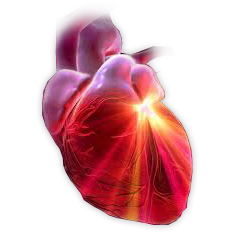
Cardiovascular
The cardiovascular system consists of the heart, blood and blood vessels. These organs form the 3 major closed circulation systems in the body, i.e., the pulmonary, coronary and systemic circulations. Cardiovascular disease includes heart disease, vascular diseases of the brain and kidney, and peripheral arterial diseases. Cardiovascular disease is the leading cause of death globally. Studies on cardiovascular regulation are important to provide a better understanding of this group of diseases and to help improve the corresponding treatment.
Targets for Cardiovascular
Products for Cardiovascular
- Cat.No. Product Name Information
-
GC45208
α-hydroxy Metoprolol
α-hydroxy Metoprolol is an active metabolite of the β1-adrenergic receptor blocker metoprolol.

-
GC48283
α-Linolenic Acid-d14
An internal standard for the quantification of αLinolenic acid

-
GC45602
α-Linolenic Acid-d5 MaxSpec• Standard

-
GC49467
β-Aescin
A triterpenoid saponin with diverse biological activities

-
GC49890
β-Glycerophosphate-d5 (sodium salt hydrate)
An internal standard for the quantification of β-glycerophosphate

-
GC40105
βARK1 Inhibitor
βARK1 Inhibitor (methyl 5-[2-(5-nitro-2-furyl)vinyl]-2-furoate) is a GRK2 (β-ARK1) inhibitor.

-
GC52400
γ-Glu-Ala (trifluoroacetate salt)
A dipeptide

-
GC52404
γ-Glu-Phe (trifluoroacetate salt)
A dipeptide with metabolism-altering activity

-
GC41393
ω-3 Arachidonic Acid methyl ester
ω-3 Fatty acids, represented primarily by docosahexaenoic acid, eicosapentaenoic acid, and α-linoleate, are essential dietary nutrients required for normal growth and development.

-
GC41661
(±)-4-hydroxy Propranolol β-D-Glucuronide
(±)-4-hydroxy Propranolol β-D-glucuronide is a metabolite of (±)-4-hydroxy propranolol, which is a metabolite of propranolol.

-
GC46273
(±)-Atenolol-d7
An internal standard for the quantification of (±)-atenolol

-
GC46289
(±)-Felodipine-d5
An internal standard for the quantification of (±)-felodipine

-
GC46307
(±)-Propranolol-d7
An internal standard for the quantification of propranolol

-
GC40229
(±)-Warfarin-d5
(±)-Warfarin-d5 is intended for use as an internal standard for the quantification of warfarin by GC- or LC-MS.

-
GC40386
(±)11(12)-EpETE
Eicosapentaenoic acid is converted to epoxyeicosatetraenoic acids (EpETE) by several cytochrome P450 isoforms.

-
GC40467
(±)11-HETE
(±)11-HETE is one of the six monohydroxy fatty acids produced by the non-enzymatic oxidation of arachidonic acid.

-
GC41649
(±)13-HODE cholesteryl ester
(±)13-HODE cholesteryl ester was originally extracted from atherosclerotic lesions and shown to be produced by Cu2+-catalyzed oxidation of LDL.
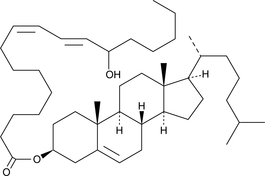
-
GC40430
(±)14(15)-EET
(±)14(15)-EET is biosynthesized in rat and rabbit liver microsomes by CYP450.

-
GC41651
(±)14(15)-EET-SI
Arachidonic acid is metabolized in the vascular endothelium to epoxytrienoic acids (EETs or EpETrEs) by cytochrome P450 enzymes.

-
GC40434
(±)16-HETE
Electrolyte and fluid transport in the kidney are regulated in part by arachidonic acid and its metabolites.

-
GC41288
(±)17(18)-EpETE-Ethanolamide
(±)17(18)-EpETE-Ethanolamide is an ω-3 endocannabinoid epoxide.

-
GC40362
(±)18-HEPE
(±)18-HEPE is produced by non-enzymatic oxidation of EPA.

-
GC40436
(±)18-HETE
(±)18-HETE is the racemic version of a cytochrome P450 (CYP450) metabolite of arachidonic acid.

-
GC41655
(±)19(20)-EDP Ethanolamide
(±)19(20)-EDP ethanolamide is an ω-3 endocannabinoid epoxide and cannabinoid (CB) receptor agonist (EC50s = 108 and 280 nM for CB1 and CB2, respectively).

-
GC40437
(±)5(6)-DiHET lactone
5,6-DiHET lactone is a lactonized form of 5,6-EET and 5,6-DiHET.

-
GC40438
(±)5(6)-EET
5(6)-EET is a fully racemic version of the enantiomeric forms biosynthesized from arachidonic acid by cytochrome P450 enzymes.

-
GC40421
(±)8(9)-EE-14(Z)-E
(±)14(15)-EE-8(Z)-E is a potent vasodilator in bovine coronary arteries.

-
GC40443
(±)9-HETE
(±)9-HETE is one of the six monohydroxy fatty acids produced by the non-enzymatic oxidation of arachidonic acid.

-
GC40541
(±)9-HODE
(±)9-HODE is one of the two racemic monohydroxy fatty acids resulting from the non-enzymatic oxidation of linoleic acid.

-
GC41666
(±)9-HODE cholesteryl ester
(±)9-HODE cholesteryl ester was originally extracted from atherosclerotic lesions and shown to be produced by Cu2+-catalyzed oxidation of LDL.
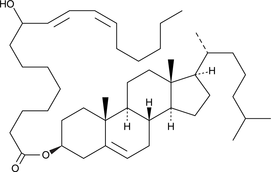
-
GC40356
(±)9-HpODE
(±)9-HpODE is a racemic mixture of the fatty acid hydroperoxide product (9(S)-HpODE) formed from lipoxygenase action on linoleic acid.

-
GC49690
(3R,5R)-Rosuvastatin (calcium salt)
A potential impurity found in bulk preparations of rosuvastatin
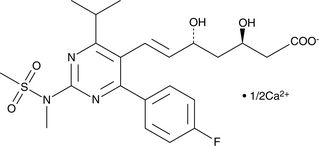
-
GC41694
(3S)-hydroxy Quinidine
(3S)-hydroxy Quinidine is an active quinidine metabolite.

-
GC48508
(4-Carboxybutyl-d4)triphenylphosphonium (bromide)
An internal standard for the quantification of (4-carboxybutyl)triphenylphosphonium

-
GC40444
(5Z,11Z,15R)-15-Hydroxyeicosa-5,11-dien-13-ynoic Acid
(5Z,11Z,15R)-15-Hydroxyeicosa-5,11-dien-13-ynoic acid is a stable isomer of 15(S)-HETE, a major arachidonic acid metabolite from the 15-lipoxygenase pathway.

-
GC49003
(E)-Ajoene
A disulfide with diverse biological activities

-
GC46336
(E)-Guggulsterone
A farnesoid X receptor antagonist

-
GC40552
(R)-Acenocoumarol
Acenocoumarol is a short-lived oral anti-coagulant, which, like warfarin, functions by inhibiting vitamin K epoxide reductase.

-
GC41722
(R,S)-Carvedilol Glucuronide
(R,S)-Carvedilol glucuronide is a racemic mixture of the carvedilol metabolites (R)-carvedilol glucuronide and (S)-carvedilol glucuronide.

-
GC40553
(S)-Acenocoumarol
Acenocoumarol is a short-lived oral anti-coagulant, which, like warfarin, functions by inhibiting vitamin K epoxide reductase.

-
GC48719
(S)-Canadine
(S)-Canadine is an alkaloid and intermediate in the biosynthesis of berberine with insecticidal activity.

-
GC49034
1(R)-(Trifluoromethyl)oleyl alcohol
An oleic acid analog

-
GC41837
1,3,7-Trimethyluric Acid
1,3,7-Trimethyluric acid is a methyl derivative of uric acid and a product of C-8 oxidation of caffeine by cytochrome P450 enzymes.

-
GC46387
1,3,7-Trimethyluric Acid-d9
An internal standard for the quantification of 1,3,7-trimethyluric acid

-
GC41846
1,3-Dioctanoyl-2-Oleoyl-rac-glycerol
1,3-Dioctanoyl-2-oleoyl-rac-glycerol is a triacylglycerol that contains octanoic acid at the sn-1 and sn-3 positions and oleic acid at the sn-2 position.

-
GC49346
1-(3-Chlorophenyl)biguanide (hydrochloride)
A 5-HT3 receptor agonist

-
GC18235
1-O-Hexadecyl-sn-glycerol
1-O-Hexadecyl-sn-glycerol is a bioactive alkyl glyceryl ether.
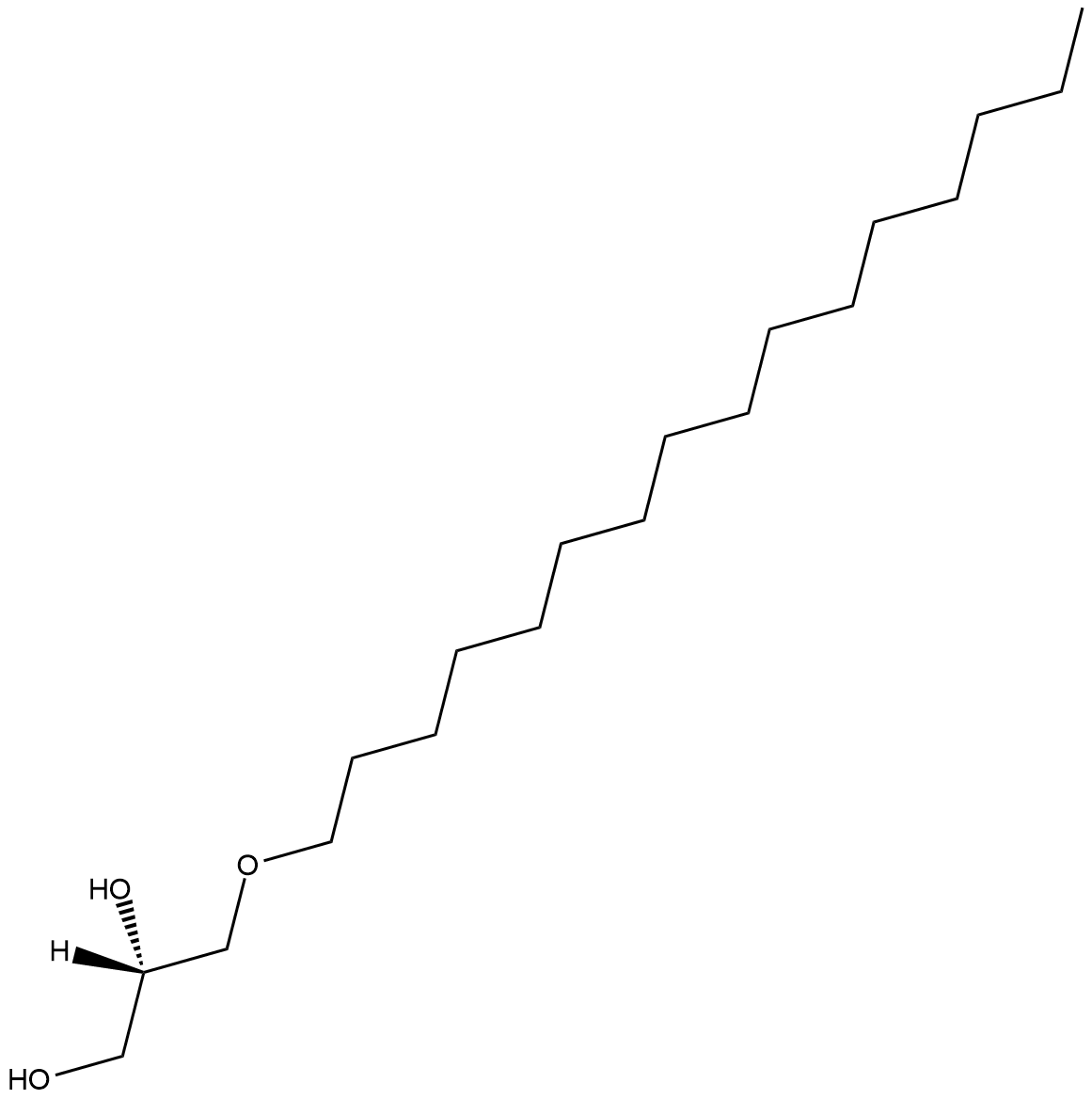
-
GC42008
1-Octadecyl Lysophosphatidic Acid
1-Octadecyl lysophosphatidic acid (1-octadecyl LPA) is a LPA analog containing stearic acid at the sn-1 position.

-
GC49071
1-Palmitoyl-d9 Lysophosphatidic Acid
An internal standard for the quantification of 1-palmitoyl lysophosphatidic acid

-
GC46496
1-Stearoyl-2-Arachidonoyl-d8-sn-glycero-3-PC
An internal standard for the quantification of 1-stearoyl-2-arachidonoyl-sn-glycero-3-PC

-
GC49733
1-Stearoyl-2-eicosapentaenoyl-sn-glycero-3-PC
A phospholipid

-
GC49118
10-hydroxy Warfarin
A metabolite of (R)-warfarin

-
GC46408
11-dehydro Thromboxane B2-d4
An internal standard for the quantification of 11dehydro thromboxane B2

-
GC18634
11-deoxy Prostaglandin E1
11-deoxy Prostaglandin E1 (11-deoxy PGE1) is a synthetic analog of PGE1.
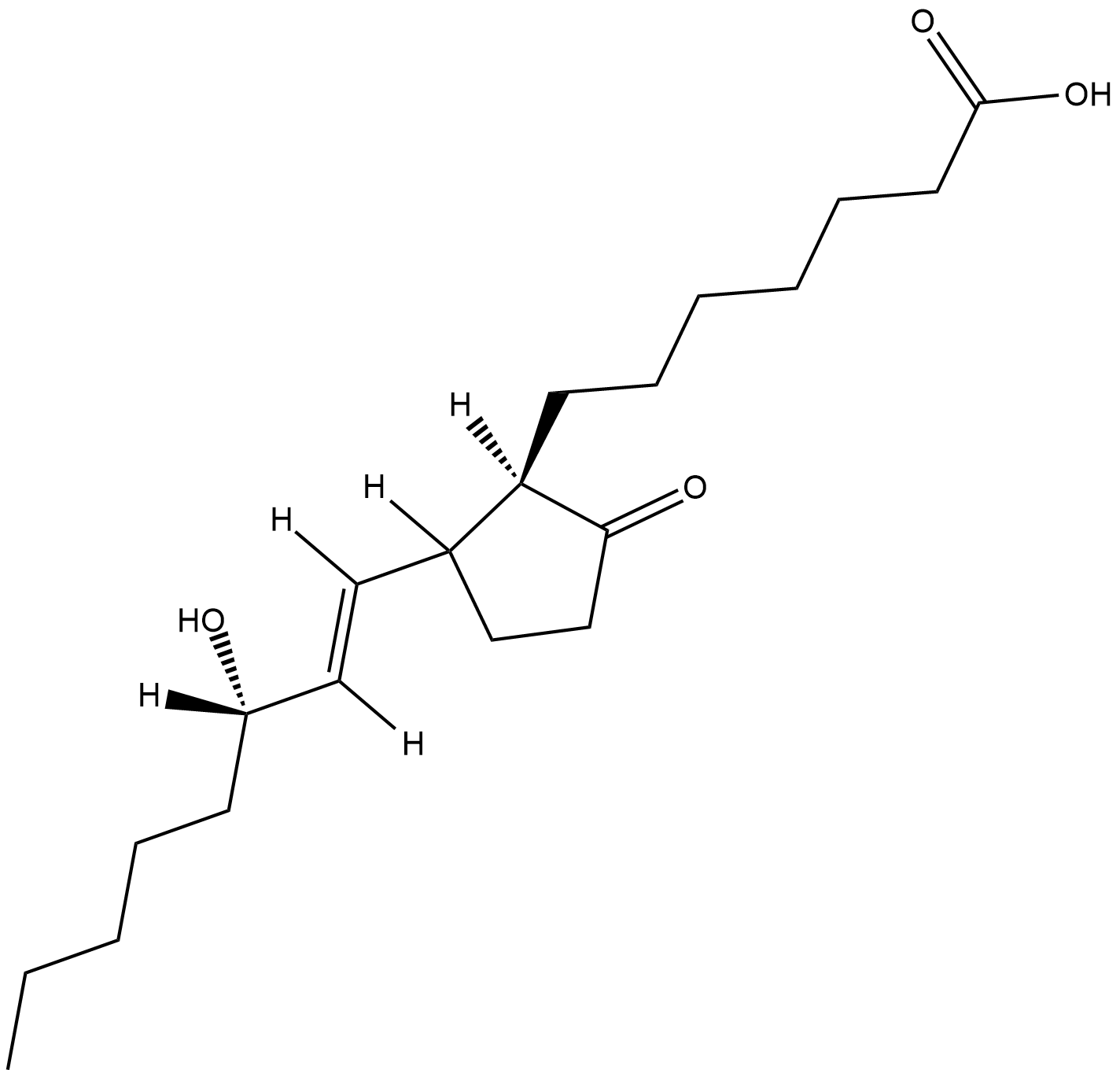
-
GC41401
11-deoxy Prostaglandin F1α
11-deoxy PGF1α is a synthetic analog of PGF1α.
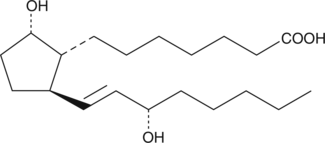
-
GC41402
11-deoxy Prostaglandin F1β
11-deoxy PGF1β is a synthetic analog of PGF1β.
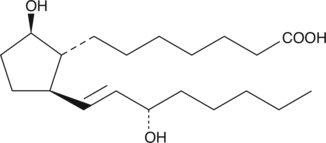
-
GC18637
11β-Prostaglandin F2α
11β-Prostaglandin F2α (11β-PGF2α) is the primary plasma metabolite of PGD2 in vivo.
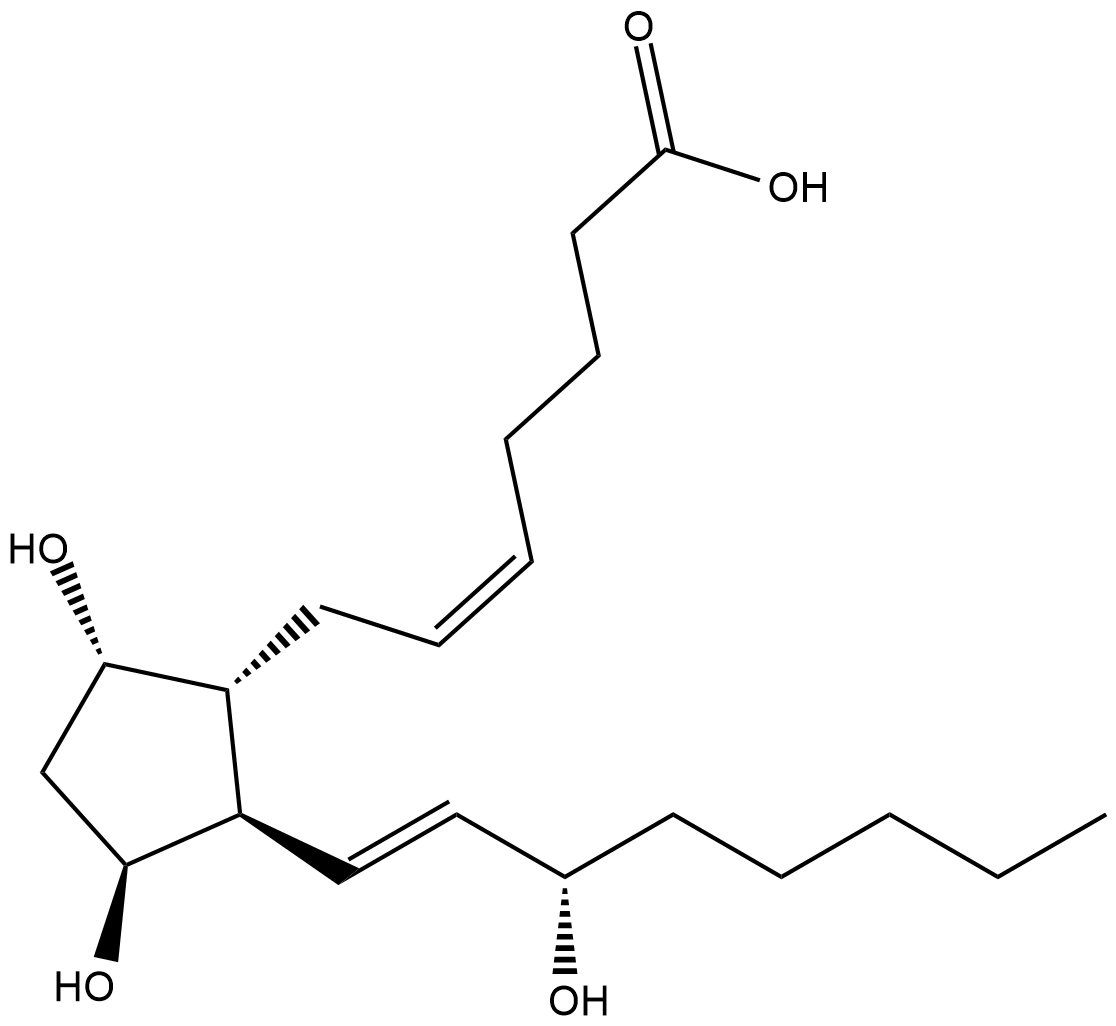
-
GC41882
12(S)-HETrE
12(S)-HETrE is produced by 12-lipoxygenase oxidation of dihomo-γ-linolenic acid (DGLA).

-
GC41893
13(R)-HODE cholesteryl ester
13(R)-HODE cholesteryl ester was originally extracted from atherosclerotic lesions.
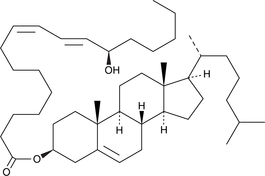
-
GC41895
13(S)-HODE cholesteryl ester
13(S)-HODE cholesteryl ester was originally extracted from atherosclerotic lesions.
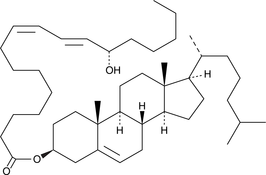
-
GC41897
13(S)-HOTrE
13(S)-HOTrE is the 15-lipoxygenase (15-LO) product of linolenic acid.

-
GC40745
13,14-dehydro-15-cyclohexyl Carbaprostacyclin
13,14-dehydro-15-cyclohexyl Carbaprostacyclin is a chemically stable analog of PGI2.
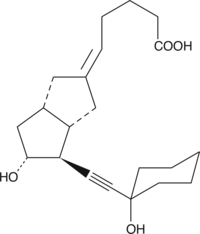
-
GC41433
13,14-dihydro Prostaglandin E1
13,14-dihydro Prostaglandin E1 (13,14-dihydro PGE1) is a biologically active metabolite of PGE1 with comparable potency to the parent compound.
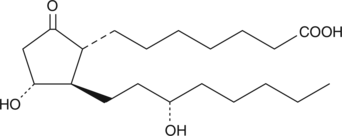
-
GC40424
14,15-EE-5(Z)-E
Epoxyeicosatrienoic acids (EETs), such as 11(12)-EET and 14(15)-EET, are cytochrome P450 metabolites of arachidonic acid that have been identified as endothelium-derived hyperpolarizing factors with vasodilator activity.

-
GC40425
14,15-EE-8(Z)-E
Epoxyeicosatrienoic acids (EETs), such as 11(12)-EET and 14(15)-EET, are cytochrome P450 metabolites of arachidonic acid that have been identified as endothelium-derived hyperpolarizing factors with vasodilator activity.

-
GC46438
14S(15R)-EET
A cytochrome P450 metabolite of arachidonic acid

-
GC41173
15(R)-Pinane Thromboxane A2
15(R)-Pinane thromboxane A2 is the (R)-epimer of pinane thromboxane A2.

-
GC41166
15(S)-15-methyl Prostaglandin D2
15(S)-15-methyl Prostaglandin D2 (15(S)-15-methyl PGD2) is a metabolically stable synthetic analog of PGD2.

-
GC41103
15-keto Prostaglandin A1
Prostaglandin A1 (PGA1) was first isolated as a dehydration product of the PGE1 compounds found in human semen.

-
GC41935
15-keto Treprostinil (sodium salt)
15-keto Treprostinil is an impurity found in treprostinil, which is a stable analog of prostaglandin I2 with a longer plasma half-life.

-
GC40973
16(R)-Iloprost
Iloprost is a second generation structural analog of prostacyclin (PGI2) with about ten-fold greater potency than the first generation stable analogs, typified by carbaprostacyclin.

-
GC40974
16(S)-Iloprost
Iloprost is a second generation structural analog of prostacyclin (PGI2) with about ten-fold greater potency than the first generation stable analogs, typified by carbaprostacyclin.

-
GC41159
16,16-dimethyl Prostaglandin D2
16,16-dimethyl PGD2 is a metabolically stable synthetic analog of PGD2.

-
GC18777
16,16-dimethyl Prostaglandin E1
16,16-dimethyl PGE1 is a metabolically stable synthetic analog of PGE1.
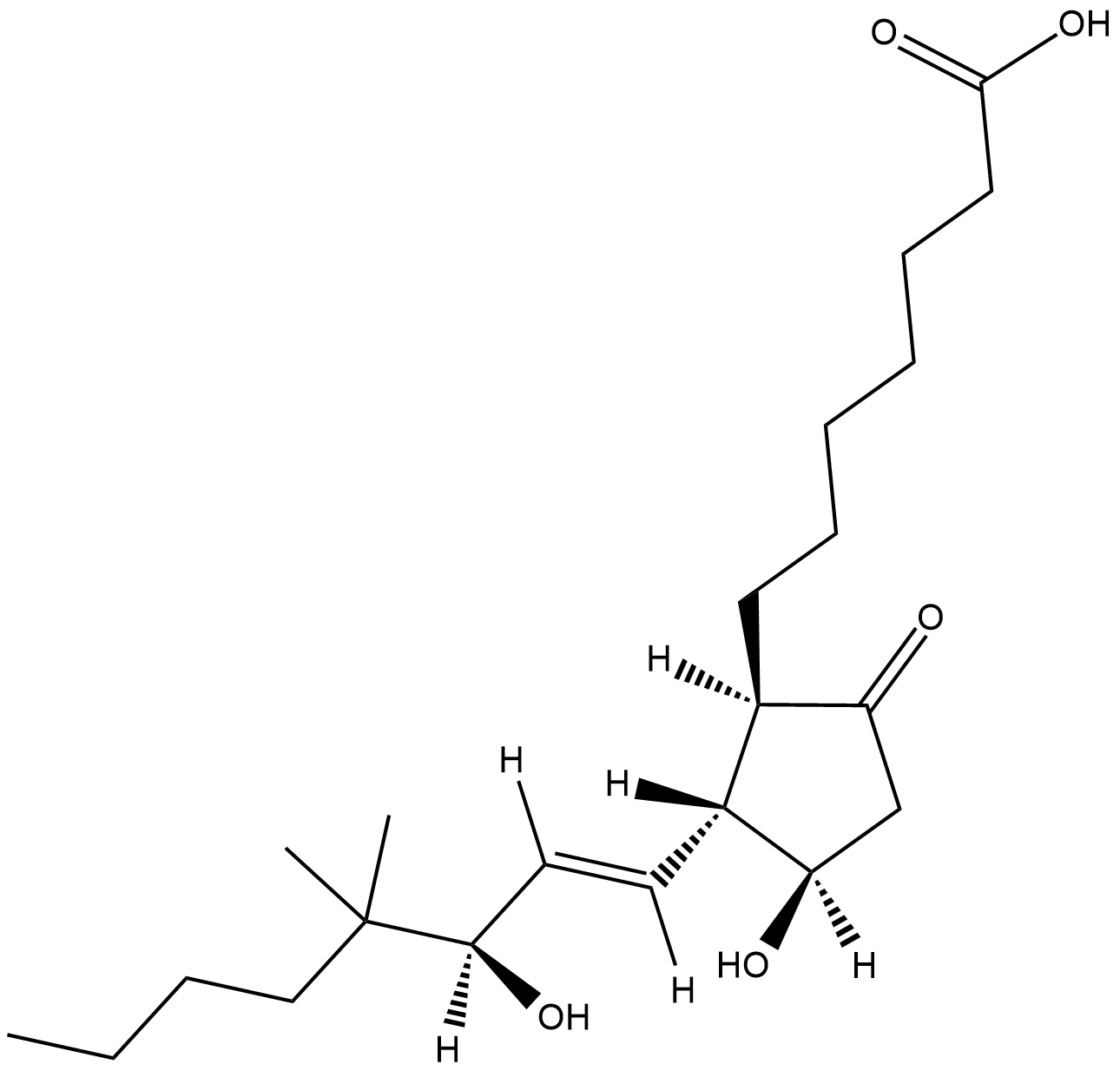
-
GC46464
17R(18S)-EpETE
An EPA metabolite and activator of BKCa channels

-
GC46474
18-Deoxyherboxidiene
A bacterial metabolite with antiangiogenic activity

-
GC18635
18-hydroxy-11-deoxy Corticosterone
18-hydroxy-11-deoxy Corticosterone (18-OH-DOC) is a mineralocorticoid secreted by the zona fasciculata of the adrenal gland.
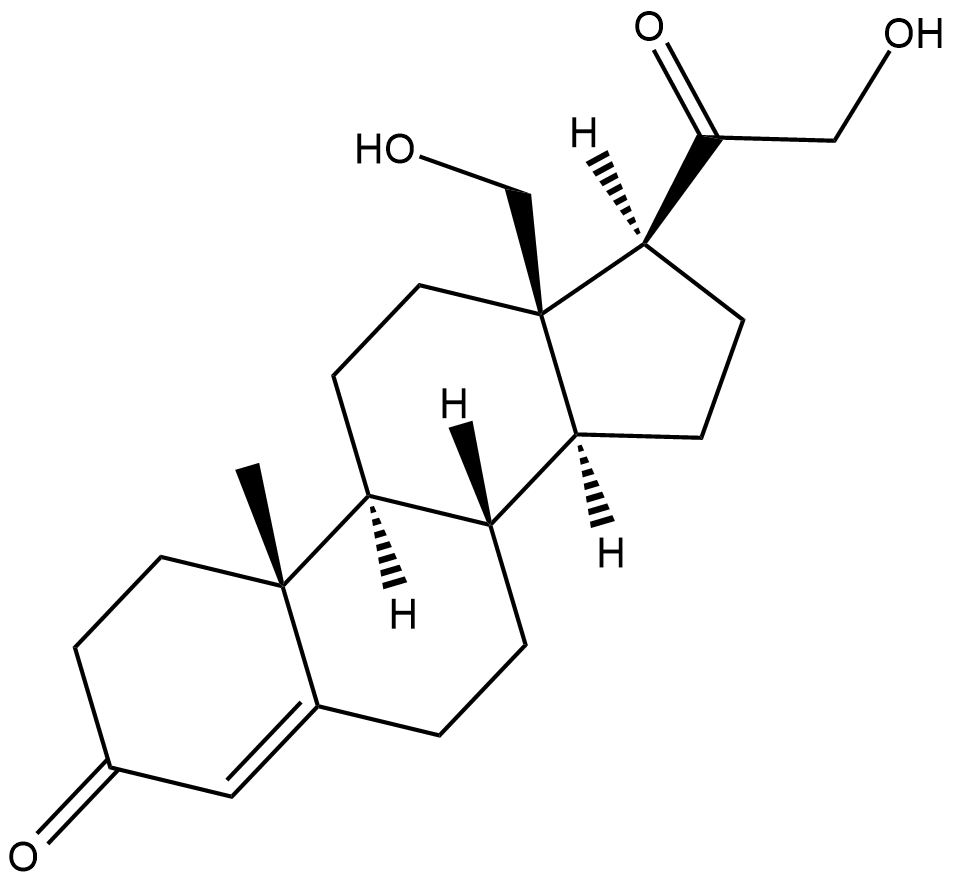
-
GC40457
19(R)-HETE
19-HETE is one of the major cytochrome P450 (CYP450) metabolites of arachidonic acid that is released from the kidney in response to angiotensin II.

-
GC40417
19-hydroxy Cholesterol
19-hydroxy Cholesterol is formed during metabolic oxidation of cholesterol.

-
GC46475
19R(20S)-EpDPA
A DHA metabolite

-
GC18748
1a,1b-dihomo Prostaglandin E1
Prostaglandin E1 (PGE1) is not a major naturally occurring PG, but is widely administered clinically for several indications including peripheral occlusive vascular disease, erectile dysfunction, and in neonatal cardiology.
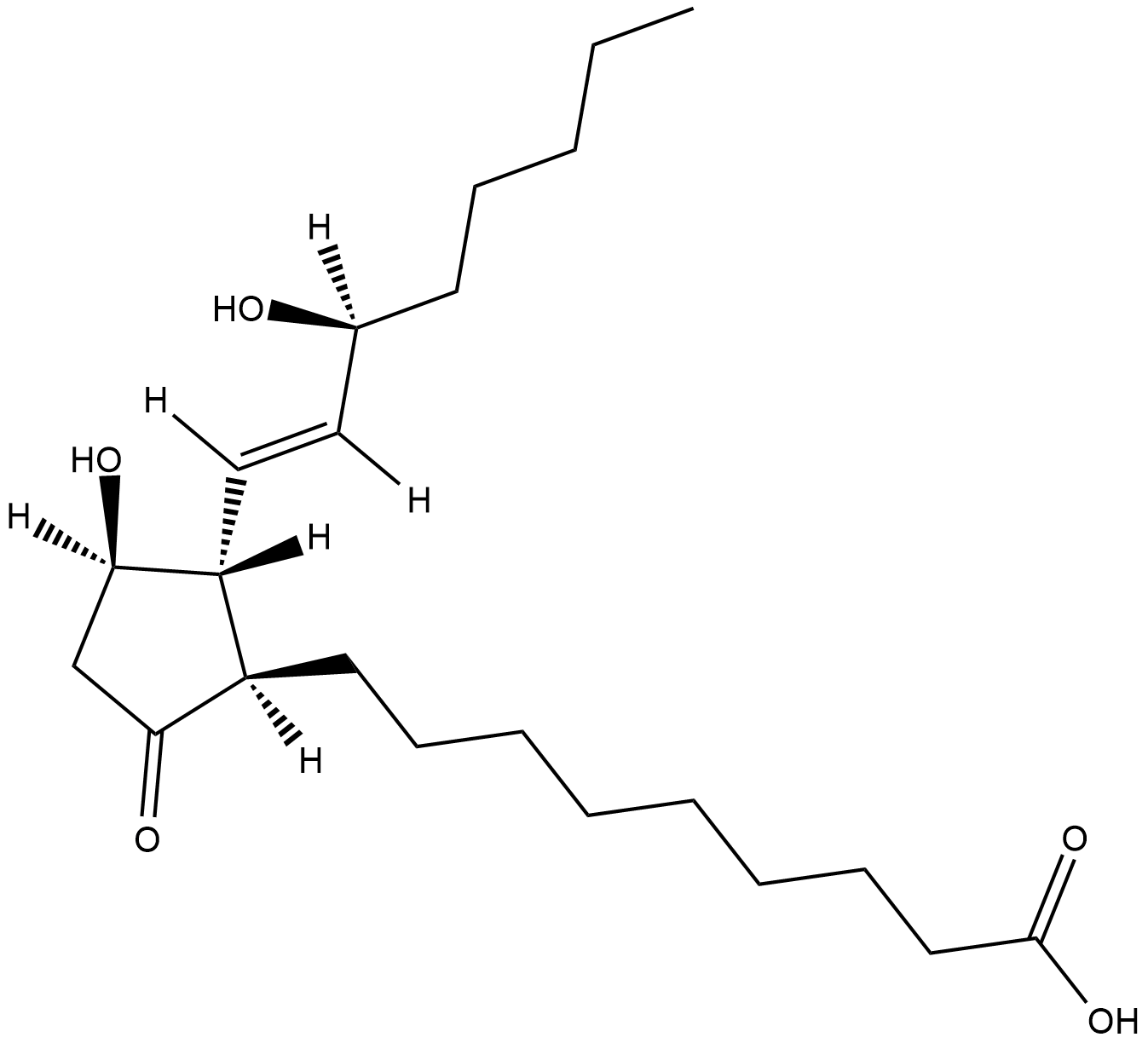
-
GC52122
2’-Deoxyadenosine-5’-diphosphate (sodium salt)
A nucleotide diphosphate

-
GC42065
2,3-dinor Thromboxane B1
Thromboxane B2 (TXB2) is released in substantial quantities from aggregating platelets and metabolized during circulation to 11-dehydro TXB2 and 2,3-dinor TXB2.
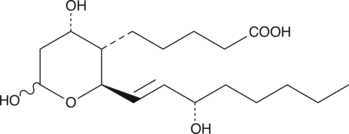
-
GC49671
2,3-Oxidosqualene
An intermediate in the biosynthesis of sterols

-
GC19560
2-(2-Phenylethyl)chromone
2-(2-Phenylethyl)chromone (Flidersiachromone) is one of 2-(2-phenylethyl)chromones that can be found in Chinese eaglewood from Aquilaria sinensis.
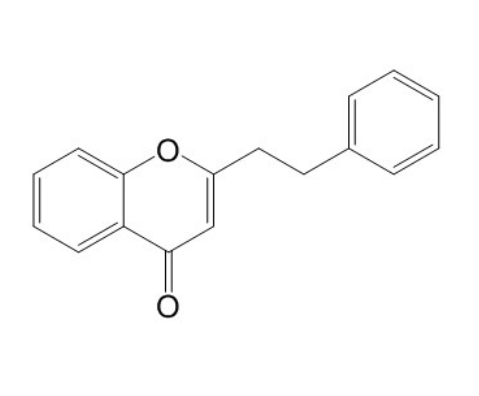
-
GC42135
2-chloro Palmitic Acid
2-chloro Palmitic Acid, an inflammatory lipid mediator, interferes with protein palmitoylation,induces ER-stress markers, reduced the ER ATP content, and activates transcription and secretion of IL-6 as well as IL-8.2-chloro Palmitic Acid disrupts the mitochondrial membrane potential and induces procaspase-3 and PARP cleavage.2-chloro Palmitic Acid can across blood-brain barrier (BBB) and compromises ER- and mitochondrial functions in the human brain endothelial cell line hCMEC/D3.

-
GC40503
2-HOBA
2-HOBA (2-HOBA) a selective dicarbonyl scavenger, is an antioxidant and scavanger of free radicals and isolevuglandins (IsoLGs).

-
GC42189
2-oxo Clopidogrel
2-oxo Clopidogrel is an intermediary metabolite of clopidogrel.

-
GC41104
20-carboxy Arachidonic Acid
20-carboxy Arachidonic acid (20-COOH-AA) is the major metabolite of 20-HETE that is produced in renal tubular epithelial, endothelial, and microvascular smooth muscle cell cultures.

-
GC41614
24-dehydro Cholesterol
24-dehydro Cholesterol is a molecule similar to cholesterol.

-
GC46243
24-dehydro Cholesterol-d6
An internal standard for the quantification of 24-dehydro cholesterol

-
GC46528
25-hydroxy Cholesterol-d6
An internal standard for the quantification of 25hydroxy cholesterol

-
GC52324
3-(3-Hydroxyphenyl)propionic Acid sulfate
A metabolite of certain phenols and glycosides

-
GC40799
3-hydroxy-3-Methylglutaric anhydride
The enzyme 3-hydroxy-3-methylglutaryl-coenzyme A (HMG-CoA) reductase mediates the rate-limiting step in cholesterol synthesis, converting HMG-CoA to mevalonate.

-
GC52048
3-hydroxy-4-Methoxyphenethylamine (hydrochloride)
3-hydroxy-4-Methoxyphenethylamine (hydrochloride) is a catecholamine compound that has an inhibitory effect on dihydropteridine reductase.

-
GC52149
306-O12B
An ionizable cationic lipidoid

-
GC42338
4-Aminobenzoic Acid hydrazide
4-Aminobenzoic Acid hydrazide is an irreversible MPO myeloperoxidase inhibitor with an IC50 of 0.3 μM.

-
GC42405
4-hydroxy Atorvastatin (calcium salt)
4-hydroxy Atorvastatin is a metabolite of atorvastatin, an HMG-CoA reductase inhibitor present in formulations that have been used to treat hypercholesterolemia and certain dyslipidemias.

-
GC18425
4-hydroxy Atorvastatin lactone
4-hydroxy Atorvastatin lactone is a metabolite of atorvastatin , an HMG-CoA reductase inhibitor present in formulations that have been used to treat hypercholesterolemia and certain dyslipidemias.
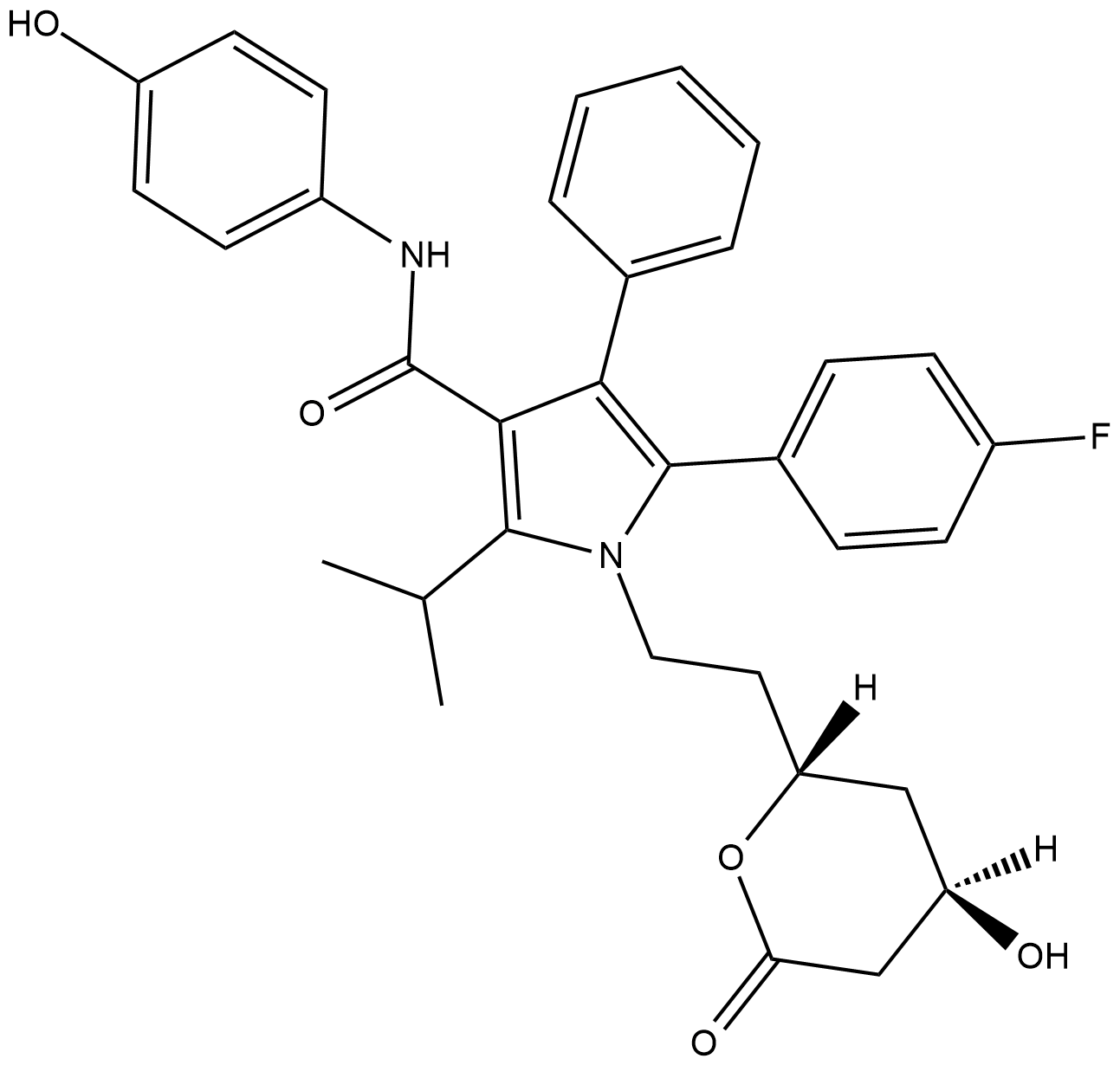
-
GC42411
4-hydroxy Nonenal Alkyne
4-hydroxy Nonenal (4-HNE) is a major aldehyde produced during the lipid peroxidation of ω-6 polyunsaturated fatty acids, such as arachidonic acid and linoleic acid.



